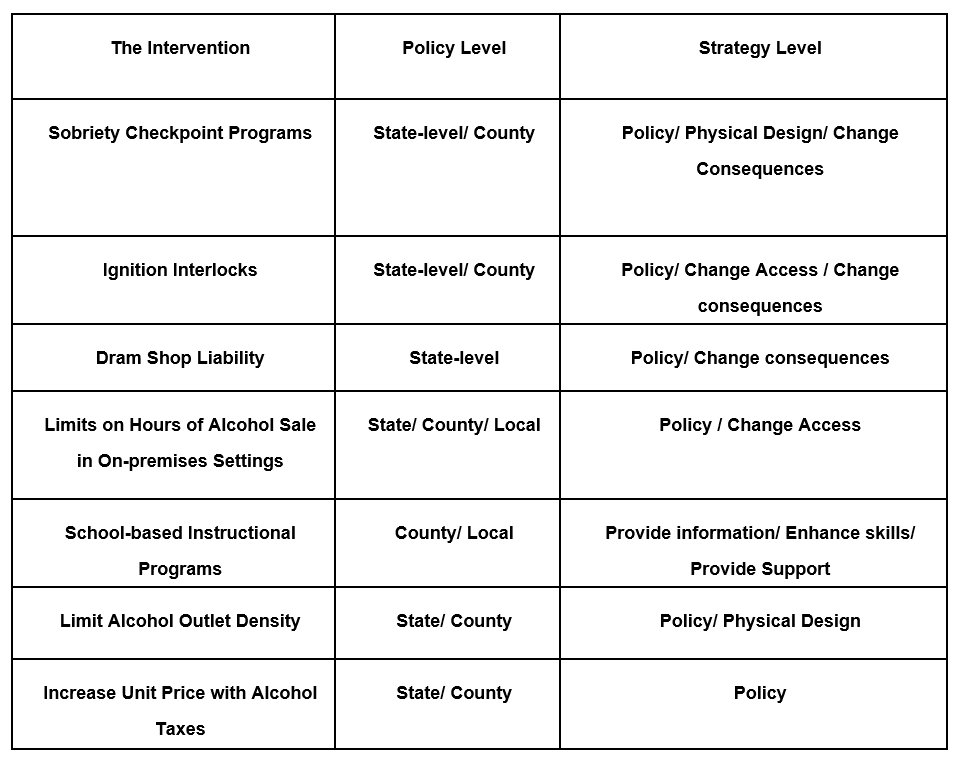Just as it is critical for our prevention efforts to be guided by local conditions and a thorough understanding of local data, our efforts need to be centered around interventions that have achieved a consensus of support from researchers and practitioners. Evidence-based interventions afford us, as practitioners, the ability to transfer lessons learned to new populations and sites, as well as better assess the results of our efforts and identify potential intervening factors that affected our implementation. In the case of Impaired Driving interventions, some previously popular scare tactics have been shown to trigger a potentially harmful emotional response or elicit risk behavior in certain youth, bringing home the responsibility we have as Preventionists to appropriately guide the partners and community leaders who look to us for our expertise.
The interventions highlighted in this toolkit have all received consensus through the CDC’s Community Prevention Services Task Force. While we present salient research to support the interventions and resources on implementation throughout, additional information on these interventions’ basis in research is collected on their site. The specific interventions highlighted in these pages were selected by their degree of impact and relevance from a committee of experts in impaired driving prevention and reduction.
A one-page summary of these interventions is available here – NHTSA Online Resource Sheet:


